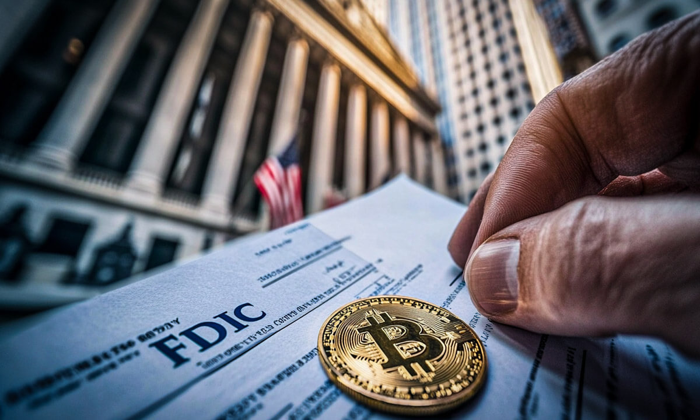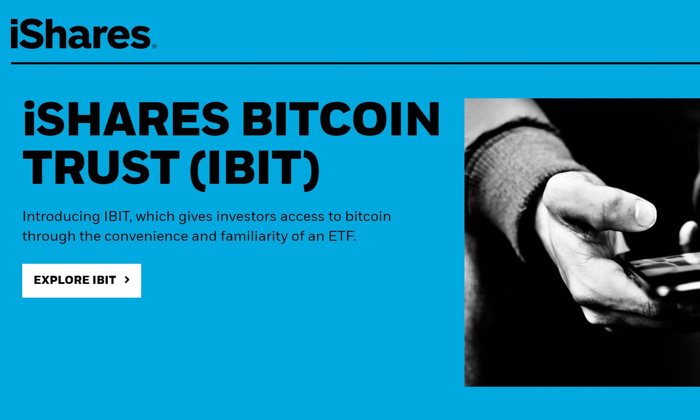The FDIC crypto guidelines are poised to reshape how U.S. banks interact with innovative digital assets and blockchain technology. Recently announced by FDIC Acting Chairman Travis Hill, these guidelines indicate a pivotal shift towards more permissive regulations governing cryptocurrency banking. With a focus on the use of public blockchains, the FDIC recognizes that a total prohibition on these networks is overly restrictive, thus paving the way for banks to engage with decentralized finance infrastructure more freely. As the agency formulates digital asset guidance, it aims to balance innovation with essential safety measures, ensuring robust oversight while exploring best practices in blockchain regulations. This proactive approach signifies a commitment to creating a transparent framework that will guide the evolving landscape of stablecoin regulations and digital banking.
The recent developments from the FDIC signal a new era in the regulatory landscape for cryptocurrencies and blockchain technology, often referred to as digital asset frameworks. The updated guidance marks a significant transformation in how financial institutions can utilize public blockchain networks, reflecting an understanding that traditional banking regulations must adapt to incorporate these modern financial systems. As banks look to navigate this shifting terrain of cryptocurrency and associated technologies, the implications of stablecoin regulatory measures and digital asset oversight become increasingly crucial. By fostering a supportive environment for innovation, while also implementing comprehensive risk management practices, the FDIC is taking steps to ensure that the integration of these digital currencies aligns with longstanding principles of financial stability and security.
Understanding FDIC’s Evolving Crypto Guidelines
The Federal Deposit Insurance Corporation (FDIC) is reshaping its approach to cryptocurrency regulation by focusing on a more flexible framework that promotes innovation while managing risks. As the landscape of digital currencies evolves rapidly, regulators are pressured to adapt guidelines that reflect the complexities of modern financial ecosystems. In his recent address, FDIC Acting Chairman Travis Hill emphasized the importance of developing clear and comprehensive guidelines that deter financial risks associated with cryptocurrency banking, and also acknowledged that the agency must balance innovation with safety.
Furthermore, the FDIC’s engagement with cryptocurrency aligns with a broader trend among financial institutions exploring blockchain regulations. The growing interest in digital assets signals an impending shift in how banks will interact with public blockchains. The key is establishing a regulatory environment that encourages responsible adoption of these technologies without stifling progress. As seen in jurisdictions globally, many banks have successfully implemented public blockchain solutions to enhance transparency and efficiency in transactions. The FDIC’s evolving crypto guidelines may eventually open pathways for U.S. banks to engage with more diversified, blockchain-based financial services.
Public Blockchain Use and Crypto Banking
Travis Hill’s remarks underscored a pivotal shift regarding the use of public blockchains by banks, indicating that the FDIC is no longer considering a strict prohibition as the best approach. The agency recognizes that public blockchains can facilitate more efficient financial operations, and the risk associated with adopting such technologies needs to be managed with appropriate regulatory guardrails. This evolution is crucial, as banks moving towards digital asset guidance often face challenges related to compliance and operational integrity.
The cautious approach of U.S. banking regulators to public blockchain use contrasts sharply with practices employed in other countries, where financial institutions have leveraged these technologies for extended periods. This disparity has raised concerns about the global competitiveness of U.S. banks in the emerging crypto ecosystem. By optimizing the regulatory framework around public blockchain use, the FDIC may help to create a conducive environment for innovation in cryptocurrency banking, ultimately benefiting consumers and the banking sector.
Future Guidance from the FDIC on Digital Assets
The FDIC’s intention to release further guidance addressing digital asset use cases is a significant development for banks venturing into cryptocurrency markets. This upcoming framework aims to clarify the permissible activities involving blockchain products and related transactions, ultimately facilitating a clearer understanding of how banks can safely operate within this rapidly evolving space. Banks will welcome this clarity as they seek to navigate the complexities of cryptocurrency compliance and risk management.
As the FDIC evaluates existing interagency guidance, stakeholders can expect a consistent regulatory approach to crypto-related activities. This consistency is essential for building trust and confidence in the financial systems as they integrate with blockchain technologies. Moreover, the establishment of specific supervisory treatment for digital assets will provide banks with the tools necessary to enhance their offerings while ensuring adherence to safety and soundness standards, which is paramount in maintaining public trust in financial institutions.
Stablecoin Regulations and Risks in Crypto Banking
With stablecoins becoming a focal point in cryptocurrency discussions, the FDIC is poised to clarify its position on their regulation, particularly regarding deposit insurance frameworks. As stablecoins facilitate various transactions in the digital economy, clarifying their eligibility for pass-through deposit insurance is vital. The FDIC’s evaluation of liquidity risk management, illicit finance safeguards, and cybersecurity standards demonstrates the agency’s commitment to adapting its regulatory framework to encompass emerging financial instruments like stablecoins.
The comprehensive review of stablecoin regulations will not only address the immediate concerns surrounding liquidity and risk management but also lay the groundwork for more expansive future use cases in the digital asset landscape. By addressing regulatory gaps and potential vulnerabilities, the FDIC can help ensure the stability of financial systems while allowing for innovative stablecoin and cryptocurrency banking solutions to flourish without compromising consumer protection.
The Impact of Tokenized Deposits on Banking
The shift towards tokenized assets, including tokenized deposits, introduces novel challenges and opportunities within the banking sector. As FDIC Chairman Hill articulated, the fundamental nature of deposits should remain consistent, regardless of technological advances. However, the regulatory landscape must evolve to recognize the implications of tokenization and the potential changes it brings to traditional banking operations. The FDIC is exploring the complexities surrounding the treatment of these digital innovations and their implications for maintaining systemic stability.
Moreover, the challenge of incorporating smart contracts into traditional banking raises questions about safety protocols during crises, like bank failures. As financial institutions consider adopting these technologies, it is crucial to establish safeguards that ensure orderly resolution processes. Addressing these concerns will require ongoing dialogue between regulators and the industry to create practices that support innovation without risking the integrity of the banking system.
Risk Management and Compliance in Crypto Banking
Effective risk management remains a cornerstone of banking operations, particularly as institutions begin to integrate blockchain technologies and digital assets into their portfolios. The FDIC’s emphasis on regulatory compliance aligns with the increasing focus on ensuring financial stability amid the integration of cryptocurrencies. Banks engaging in crypto-related activities must develop robust frameworks to identify, assess, and mitigate risks associated with innovations like public blockchain use and stablecoin issuance.
The evolving nature of cryptocurrency banking necessitates an ongoing commitment to maintaining sound risk management practices that adhere to regulatory standards. By aligning risk management strategies with FDIC guidelines, banks can harness the benefits of digital assets while mitigating potential financial instability. Adoption of conscientious and adaptive frameworks will be crucial for navigating the intersection of innovation and traditional banking, ensuring that as services evolve, so too do protections for consumers and the wider economy.
Navigating the Future of Blockchain Regulations
As the FDIC prepares to unveil its proposed guidelines for cryptocurrency and blockchain engagement, the future of blockchain regulations remains uncertain yet promising. The emerging framework will likely aim to balance innovation with the rigorous oversight synonymous with the banking industry. This movement signals to financial institutions that regulators are acknowledging the importance of digital assets, encouraging them to explore blockchain solutions that enhance operational efficiencies and increase transparency in transactions.
However, establishing a successful regulatory framework necessitates collaboration among federal and state agencies, as well as industry stakeholders. Therefore, clarity in the upcoming regulations will be crucial for banks deploying blockchain technologies. As discussions continue, the investment in research surrounding blockchain regulations will likely yield transformative insights, shaping a future where financial institutions can thrive in a competitive and technology-driven landscape.
The Role of Digital Asset Guidance in Banking
Digital asset guidance will play a pivotal role in shaping the banking industry’s approach to cryptocurrency. As the FDIC formulates its policies, banks will be keen to understand how digital assets will fit within existing compliance structures. The guidance offered will provide necessary clarity on how banks can manage risk, ensure compliance, and remain competitive in an evolving financial landscape filled with emerging technologies.
Additionally, effective digital asset guidance can assist banks in navigating the complexities of interacting with cryptocurrency while adhering to regulatory requirements. By creating frameworks that clearly define acceptable practices and boundaries for crypto-related activities, the FDIC can help foster an environment conducive to both innovation and compliance, enabling banks to fully embrace the potential benefits of blockchain and digital assets without compromising on accountability or security.
Importance of Transparency in Crypto Regulations
Transparency will emerge as a key theme in the FDIC’s revised approach to cryptocurrency regulation, particularly regarding public blockchain use and related innovations. As banking institutions consider integrating these technologies, the need for clear regulatory guidance becomes evident. Transparency ensures that both consumers and financial entities understand the implications of regulatory measures, fostering trust and cooperation between regulators and the industry.
Moreover, by promoting transparency, the FDIC can help alleviate concerns surrounding the risks and uncertainties associated with cryptocurrency. Clear, well-articulated regulations will allow banks to operate with confidence while providing consumers with the information necessary to make informed financial decisions. Striking a balance between innovation and stringent oversight will ultimately empower the banking sector to leverage blockchain technology effectively while maintaining regulatory compliance and enhancing the overall integrity of the financial system.
Frequently Asked Questions
What are the FDIC crypto guidelines regarding banks and public blockchain use?
The FDIC crypto guidelines now allow for U.S. banks to engage with public, permissionless blockchains under certain conditions. While previously maintaining a cautious stance, the FDIC recognizes the need for a framework that supports innovation while ensuring safety. This includes evaluating existing interagency guidance to establish standards for responsible blockchain use by banks.
How does the FDIC’s standpoint on cryptocurrency banking impact regulatory practices?
The FDIC’s evolving guidelines on cryptocurrency banking signify a shift towards a more permissive approach, allowing banks to engage in digital asset activities without prior notification. This change aims to enhance clarity in the regulatory landscape while emphasizing necessary risk management and compliance with safety standards.
What is the FDIC’s position on stablecoin regulations?
The FDIC is actively assessing stablecoin regulations, particularly regarding eligibility for pass-through deposit insurance and liquidity risk management. The agency is considering updates to clarify these regulations in light of Congress’s legislative movements and aims to strengthen safeguards against illicit finance.
What risks does the FDIC associate with using smart contracts for tokenized deposits?
The FDIC has raised concerns that using smart contracts for tokenized deposits could complicate fund withdrawals during bank failures, potentially increasing resolution costs. They are exploring regulatory solutions to ensure that safeguards are in place, allowing for orderly exits in crisis scenarios.
How is the FDIC developing guidance for digital asset activities in banks?
The FDIC plans to issue further guidance on specific digital asset use cases as part of its strategy to create a consistent supervisory framework for banks engaging with cryptocurrencies and blockchain technology. This guidance will focus on permissible activities, supervisory treatment, and risk management expectations.
What are the implications of the FDIC’s decision to rescind notifications for digital asset activities?
By rescinding the requirement for banks to notify the FDIC before engaging in digital asset and blockchain activities, the agency is fostering a more innovative environment. This change allows banks to explore cryptocurrency-related services more freely while still adhering to safety and soundness protocols.
What does the FDIC’s recent guidance indicate about the future of blockchain regulations?
The recent FDIC guidance indicates a foundational shift towards embracing blockchain technologies in the banking sector, aiming to balance innovation with regulation. The agency is focused on establishing clear rules for public blockchain interactions and defining permissible practices to enhance the overall regulatory framework.
How does the FDIC’s guidance address public blockchain use by banks?
The FDIC’s guidance reflects a less prohibitive stance towards the use of public blockchains by banks, acknowledging that complete prohibition may be too limiting. The agency seeks to ensure appropriate regulatory oversight and safeguard measures are in place to govern this evolving landscape.
| Key Points | Details |
|---|---|
| FDIC’s New Crypto Guidelines | The FDIC is developing a framework for banks to engage with cryptocurrencies. |
| Public Blockchain Use | The FDIC is reviewing how U.S. banks can interact with public, permissionless blockchains, moving away from a total prohibition. |
| Regulatory Shift | The FDIC is transitioning to allow banks to engage in digital asset activities without prior notification to the agency. |
| Stablecoin Regulations | The FDIC is exploring regulations related to stablecoins, including deposit insurance frameworks and safeguards against risks. |
| Tokenized Deposits | The FDIC emphasizes the need for clear regulatory treatment of tokenized assets and potential risks associated with smart contracts. |
Summary
The FDIC crypto guidelines represent a significant development in the regulation of cryptocurrencies within the United States banking system. By promoting a more permissive framework for banks to engage with digital assets, the FDIC aims to foster innovation while ensuring safety and adherence to sound banking practices. Their evolving stance acknowledges the importance of public blockchains and stablecoins, signaling a cautious yet constructive approach to integrating these technologies into the traditional banking framework. The agency’s commitment to refining and updating regulations demonstrates its proactive measures to address the challenges and opportunities presented by cryptocurrency and blockchain technologies.
The FDIC crypto guidelines are shaping the future of cryptocurrency engagement in the banking sector. As the Federal Deposit Insurance Corporation seeks to create a balanced framework for banks to explore digital assets, a focus on public blockchain use is emerging. With cryptocurrency banking becoming an integral part of the financial landscape, institutions are eager for clear rules that promote innovation while ensuring security. These guidelines will look into various aspects, including the stability of digital currencies and compliance with evolving blockchain regulations. By establishing robust protocols, the FDIC aims to facilitate responsible interactions between banks and the burgeoning world of cryptocurrencies.
In recent discussions surrounding regulatory frameworks, the FDIC has emphasized its commitment to fostering a secure environment for cryptocurrency adoption in the banking sector. Themes around digital asset guidance and stablecoin regulations are becoming increasingly relevant as financial institutions navigate the complexities of blockchain technology. As banks integrate public blockchains into their operations, the necessity for comprehensive oversight is clearer than ever. This evolving narrative highlights the need for an adaptable regulatory approach that aligns with global standards while addressing local concerns in cryptocurrency banking. Furthermore, addressing the risks associated with this digital landscape will be crucial in shaping future public trust and regulatory effectiveness.















